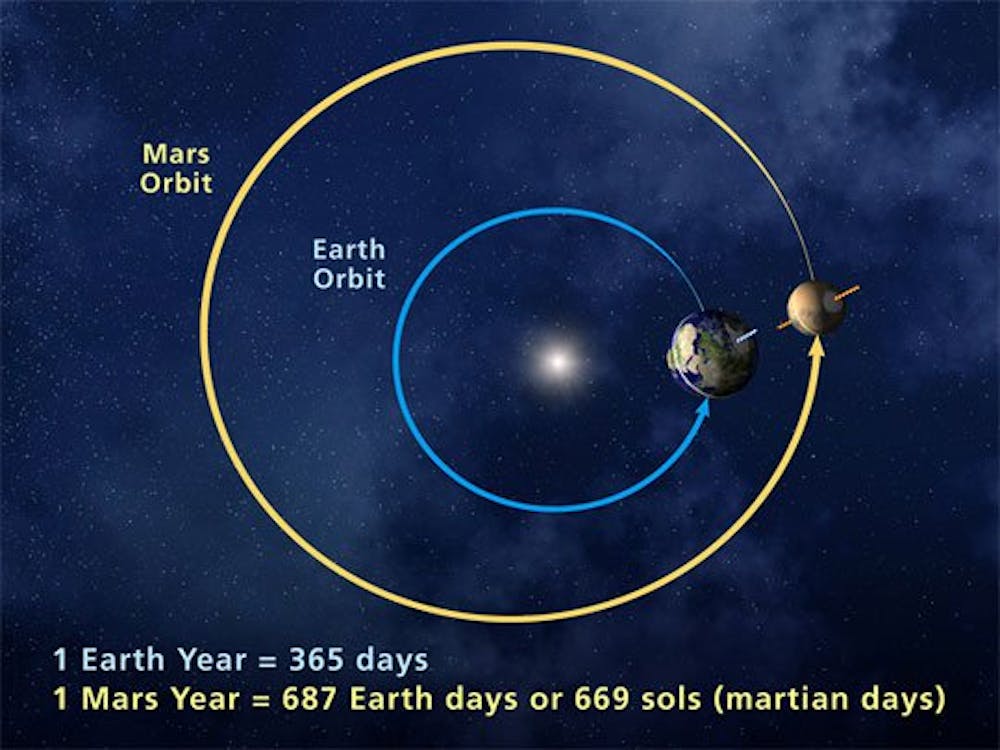A new geological study suggests that Mars’ gravitational field pulls the Earth closer to the sun over cycles lasting millions of years, warming our climate.

Within cycles of millions of years, Mars pulls the Earth closer to the sun which could affect the warming of our planet via changes in ocean circulation, a new study predicts.
Mars’ gravitational pull on Earth may be influencing the climate on our planet, new research hints.
Geological evidence tracing back more than 65 million years and taken from hundreds of sites across the world suggests that deep-sea currents have repeatedly gone through periods of being either stronger or weaker. This happens every 2.4 million years and is known as an “astronomical grand cycle.”

The stronger currents, known as “giant whirlpools” or eddies, may reach the seafloor at the deepest parts of the ocean, known as the abyss. These powerful currents then erode away at the large pieces of sediment that accumulate during calmer periods in the cycle, according to research published Tuesday (March 12) in the journal Nature Communications.
/https://tf-cmsv2-smithsonianmag-media.s3.amazonaws.com/filer_public/51/b8/51b81e71-f087-4f6e-85b8-83a95362a486/main_planetmars-vallesmarineris-vikingorbiter-1980_web.jpg)
These cycles happen to coincide with the timing of known gravitational interactions between Earth and Mars as the two planets orbit the sun, the study found.
“The gravity fields of the planets in the solar system interfere with each other and this interaction, called a resonance, changes planetary eccentricity, a measure of how close to circular their orbits are,” study co-author Dietmar Müller, a professor of geophysics at the University of Sydney, said in a statement.

Due to this resonance, the Earth is pulled slightly closer to the sun by Mars’ gravitational pull, meaning our planet is exposed to more solar radiation and hence has a warmer climate, before drifting backward again — all over a period of 2.4 million years.
The authors of the new study used satellite data to map the accumulation of sediment on the ocean floor over tens of millions of years. They found that there were gaps in the geological records where sediment stopped building up within these astronomical cycles. They believe that this could be linked to stronger ocean currents as a result of warmer weather caused by Mars’ gravitational influence on Earth.

These findings support the idea that the Red Planet influences the climate on Earth, just as passingstars and other astronomical objects have been theorized to. However, the observed warming effect is not linked to global warming that is being driven by human greenhouse gas emissions, the authors emphasized in the statement.
Nevertheless, although speculative at this stage, the findings suggest that this cycle may help periodically maintain some of the ocean’s deep currents in the event that global warming decreases them, the authors say.

“We know there are at least two separate mechanisms that contribute to the vigor of deep-water mixing in the oceans,” Müller said. One of these mechanisms is known as the Atlantic Meridional Overturning Circulation (AMOC), Müller said. This acts as an ocean “conveyor belt,” bringing warm water from the tropics to the Northern Hemisphere, pulling heat deep into the ocean in the process.
Some scientists predict that the AMOC may collapse over the next few decades so it’s possible that the ventilation induced by deep ocean eddies could be beneficial.
“Our deep-sea data spanning 65 million years suggests that warmer oceans have more vigorous deep circulation,” Adriana Dutkiewicz, lead study author and sedimentologist at the University of Sydney, said in the statement. “This will potentially keep the ocean from becoming stagnant even if Atlantic meridional overturning circulation slows or stops altogether.”
